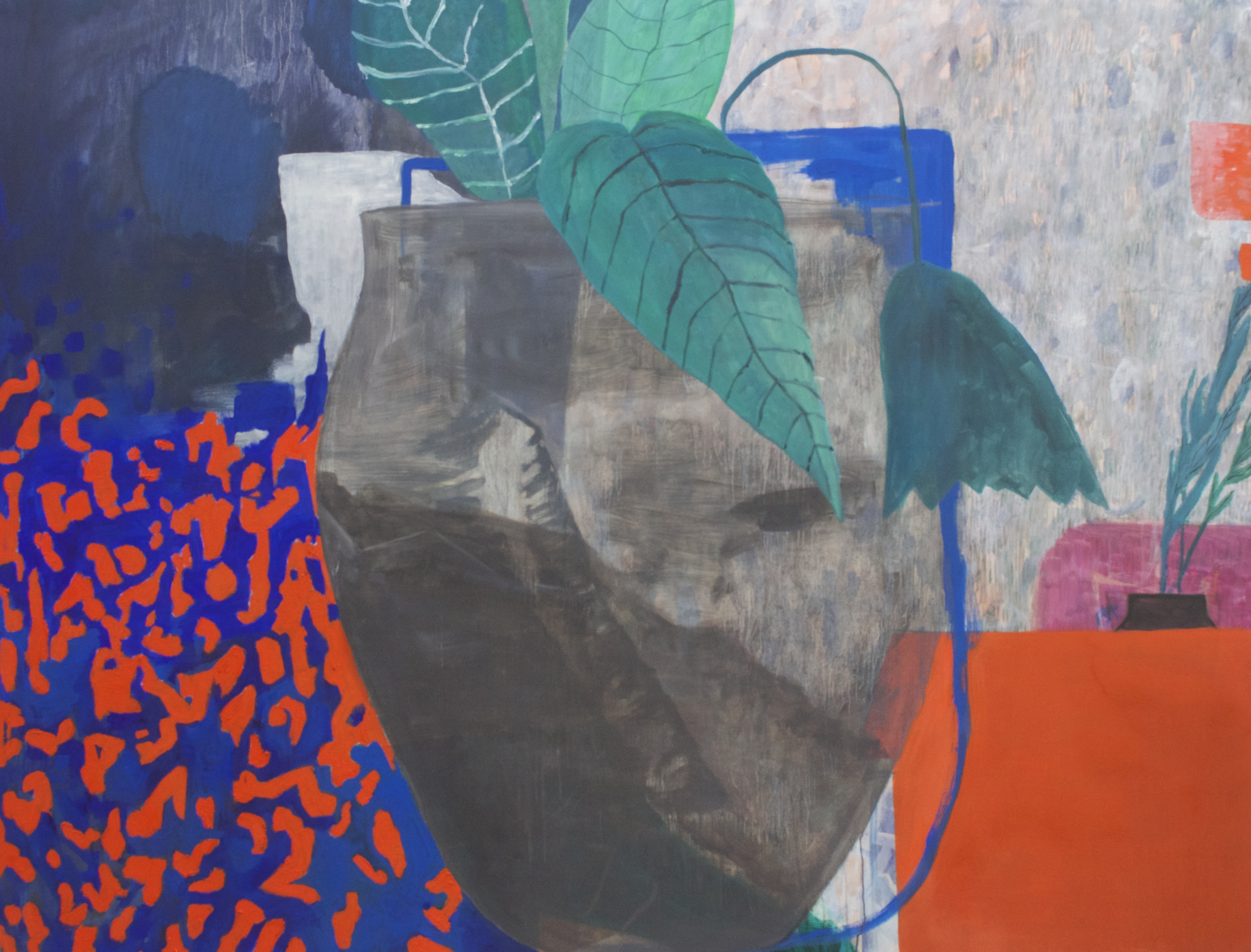A Proper Space








— Oil on canvas, 130 × 170 cm, 2016./2017.
Gallery Prsten (HDLU) / Zagreb
Painting is a medium that provides an artist with numerous possibilities, among which is creating a unique system of signs, that is, a visual language shaped by the artist. Such a unique system of symbols, signs and forms, which we can also call Jelena Bando’s visual world, is, both in terms of research and visual vocabulary, focused on the Other. This relationship with the Other, that the contemporary theory defines as a concept that problematizes the interaction of one person with another, but also as the issue of temporally and spatially remote communication between cultures, became the main topic of her work. However, in order to familiarize you with this fascination, we should refer to some of her earlier series of works. The series of works titled “The Other“was a result of research directly driven by her personal experience of the culture of the Other, of the association of immigrants from Guadalupe Island she met in Paris. This encounter became the topic that the artist built upon by placing these selected characters, members of some other culture, into imaginary landscapes, constructing thus her own view of the Other. Already in the following series of works, “Encounters in Disappearance”, the artist selected endangered communities, whose traditional way of life might be threatened by external influences, in order to express her own view of such potential transformation. This time, she met the Other and selected communities exclusively through various media (the Internet, books, photographs…), and fictionally initiated encounters with them through drawings in which she articulated her own comment on the observed situation. Imaginary landscape was still present. However, with the series of works A Proper Space the artist makes a semantic shift. This time she elaborates her own view of the Other by replacing the imaginary landscape with her real living space. In this subtle balance on the verge of real and imaginary she creates a new visual language, again full of uncanny and realistic reference points, such as human figures, plants and animals. This time, the so often mentioned Other has found his safe place in the artist’s pleasant everyday, in the interior of her apartment, surrounded by real motives from her life.
—
Morana Matković
—
Morana Matković